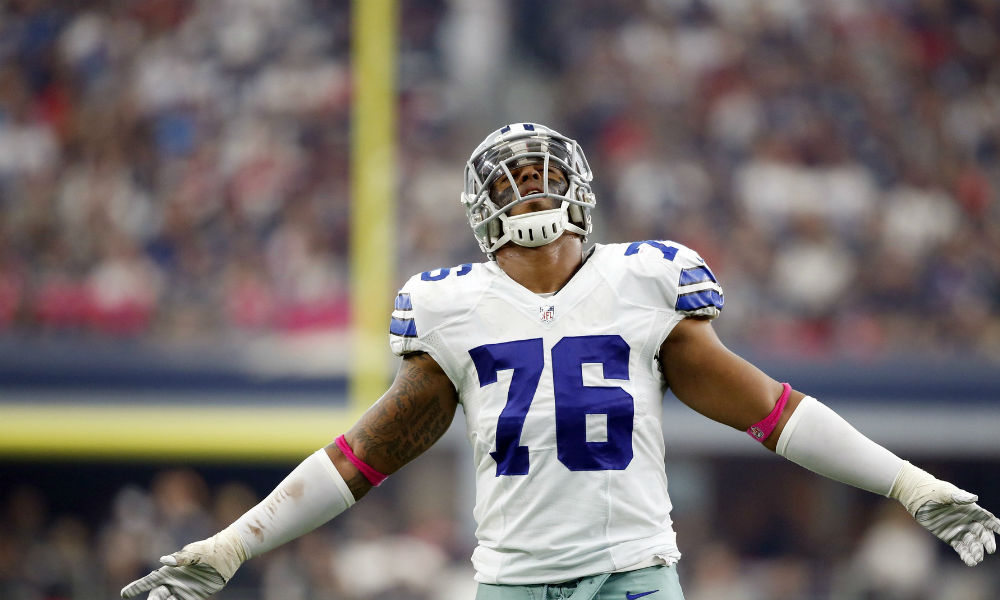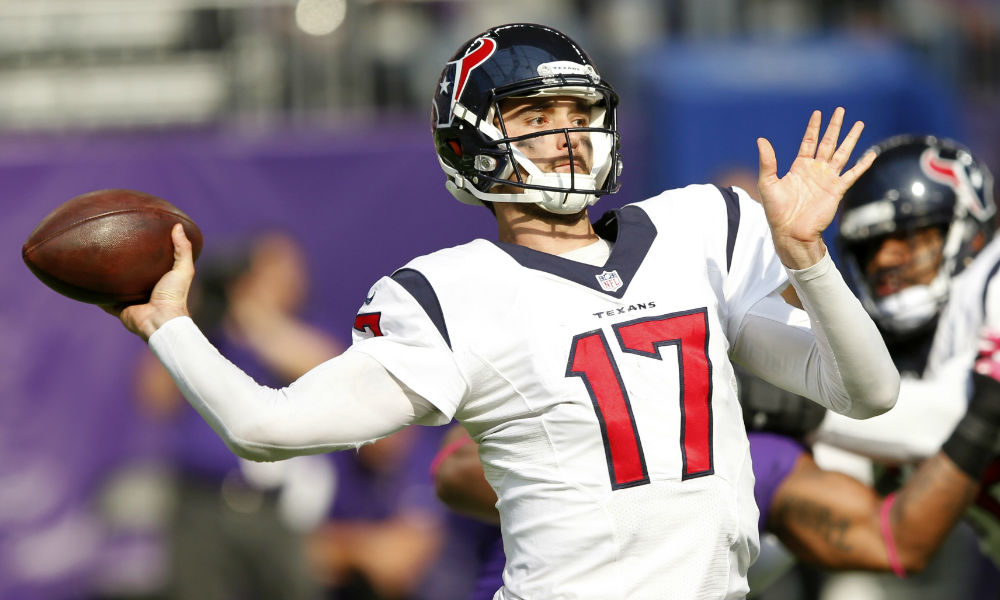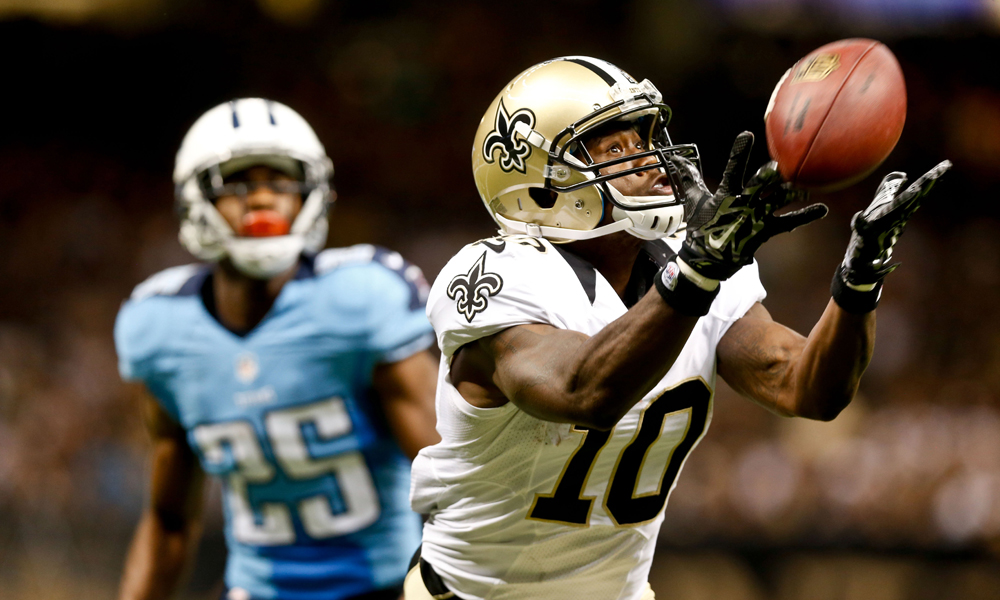News
How did the AFC South Teams Fare in the Last Three NFL Drafts?
We examine the best, worst and most intriguing draft picks from each AFC South squad.
NFL executives used to insist it takes three years to properly evaluate a draft class. Unfortunately, that crap doesn’t fly anymore. In today’s NFL, teams realize the best way to build a contender while staying under the salary cap is to get immediate contributions from players on their rookie contracts. With that in mind, we are kicking off a new series examining how every team has done over the last three drafts.
To prevent our evaluations from turning into a novel of biblical lengths, we will focus on three players from each team’s recent draft classes: the best pick, the worst pick and the X Factor. This week: the AFC South. If you missed our previous pieces, check out the AFC North Draft Review and the AFC East Draft Review.
Jacksonville Jaguars
Best Pick: RB Denard Robinson (Fifth Round, 2013)
Robinson, a college quarterback, was initially drafted to be a change-of-pace runner and execute a few gadget plays. Instead, he has been better than expected as a traditional running back, starting nine games last season and ripping off a nice three-week stretch from Weeks 7-9 when he averaged 109.6 rushing yards per game.
“We’re really pleased with his progress and we’re hopeful that he takes the next step,” head coach Gus Bradley said. “Where that takes him in the rotation, that’s yet to be seen.”
Worst Pick: WR Justin Blackmon (First Round, 2012)
Blackmon has been sensational when on the field, but his problems with alcohol and marijuana have resulted in him being suspended for all but four games over the last two seasons. There is hope he will be reinstated prior to next season, possibly before the NFL Draft, but at this point the Jaguars cannot count on him to keep his nose clean.
X Factor: QB Blake Bortles (First Round, 2014)
Bortles’ rookie season was similar to David Carr’s rookie campaign back in 2002: it was difficult to evaluate because of limited offensive weapons and porous pass protection. The biggest issue was the turnovers, as he threw 17 interceptions against just 11 touchdowns. However, he showed the ability to move the football — falling just short of the 3,000-yard mark despite starting only 13 games — and displayed poise in the pocket. This upcoming season should be a better gauge of his ability to handle the “franchise QB” mantle.
Houston Texans
Best Pick: WR DeAndre Hopkins (First Round, 2013)
Hopkins has been sensational since joining the Texans and his role only figures to expand as Houston prepares for life after Andre Johnson. He racked up over 1,200 receiving yards last season to go along with a half-dozen scores. He averages over 15 yards per catch for his career and can attack every part of the field.
Worst Pick: OG Xavier Su’a-Filo (Second Round, 2014)
This was a bad pick for two reasons. Firstly, Su’a-Filo started just one game as a rookie — you expect more than that from an interior lineman drafted No. 33 overall. Secondly, the Texans picked him ahead of QB Derek Carr, who was terrific in his rookie season with the Raiders. If the Texans had selected Carr instead of Su’a-Filo, they could have made the playoffs last season and would currently be considered Super Bowl contenders.
X Factor: DE Jadeveon Clowney (First Round, 2014)
Clowney’s rookie season was derailed by injuries, ultimately resulting in him undergoing microfracture surgery on Dec. 8. GM Rick Smith believes Clowney can be back in the field in time for Week 1, but there are concerns if he will ever get back to 100 percent. If last year’s No. 1 overall pick can get right, he could team with J.J. Watt to give the Texans the most feared pass rush in football.
Indianapolis Colts
Best Pick: QB Andrew Luck (First Round, 2012)
The best pick by any team over the last three years is easily Luck. He will be part of the annual MVP discussion for the rest of his career and is coming off his best playoff showing to date, leading the Colts to the AFC Championship Game. He averages over 4,000 yards per season and has thrown twice as many career TDs as INTs (86 to 43). Looking back, the debate between Luck and Robert Griffin III was about as laughable as the debate between Peyton Manning and Ryan Leaf back in 1998.
“Luck’s magic,” Colts owner Jim Irsay said. “When you watched him in college, when the play breaks down, in that half a second, he does things that are so innate and so unusual. That’s when the magic happens. He just decides in a split second, and he has the athletic and the physical skills to do that with his arm strength…with his feet. So really the sky is the limit.”
Worst Pick: DE Bjoern Werner (FIrst Round, 2013)
Werner was a healthy scratch against the Patriots in the AFC Championship Game, which tells you all you need to know about how quickly his stock has fallen. He battled ankle and shoulder injuries late last season, but 6.5 sacks over two seasons is hardly first-round production no matter the circumstances. He is merely a situational player at this point.
X Factor: WR Donte Moncrief (Third Round, 2014)
Moncrief enjoyed a nice rookie season, catching 32 passes for 444 yards and three scores. He will have a chance to double those numbers (and them some) in 2015, especially with Reggie Wayne and Hakeem Nicks both headed for free agency. Moncrief has the size (6’2, 221 lbs.) and physicality to be the perfect complement to T.Y. Hilton. He also has elite top-end speed that can take the top off a defense.
Tennessee Titans
Best Pick: WR Kendall Wright (First Round, 2012)
Wright led all Titans receivers in 2014 with 57 catches for 715 yards and six TDs. He was even better in 2013 (94 catches for 1,079 yards) when Charlie Whitehurst was still holding a clipboard in San Diego and Zach Mettenberger was still taking selfies on the LSU campus. If Ken Whisenhunt can find a quarterback to properly execute his offense (Marcus Mariota?), Wright could be primed for his best season to date.
Worst Pick: RB Bishop Sankey (Second Round, 2014)
Sankey was the first running back selected in last year’s draft, but that just shows how barren that draft class was at the running back position. Sankey had some nice moments as a rookie, but he averaged just 3.7 ypc and had as many lost fumbles (two) as he scored rushing touchdowns. He didn’t do much as a receiver either, averaging about a catch per game. The Titans plan to go with more of a power running game in 2015, so it remains unclear how a finesse runner like Sankey fits into those plans.
X Factor: LB Zach Brown (Second Round, 2012)
Brown missed almost all of last season with a pectoral injury, but the team believes he can bounce back and play a significant role. He certainly showed that ability during his first two seasons, compiling 184 tackles, 9.5 sacks and four interceptions. If he can regain that form post-injury, it will be a huge boost to a Titans defense that just gave up more points than all but two teams.
News
Buccaneers admit mistake, boot Aguayo
Source: Mike Florio of ProFootballTalk
Powered by WPeMatico
News
Did Bucs put too much pressure on Aguayo?
Source: Mike Florio of ProFootballTalk
Powered by WPeMatico
News
Broncos holding their breath on Derek Wolfe
Source: Mike Florio of ProFootballTalk
Powered by WPeMatico




